
A continuation of Woody's 'Nuff Said column from the CBGAZETTE website, covering CB past and present along with Amateur (ham) radio interests.
Wednesday, November 29, 2006
Wednesday, November 15, 2006
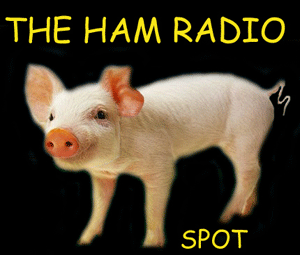
 contests, helping other operators learn what they needed to learn to get a WAS, or WAC award. The "Rock", or in this case the anchor for the repeater was up at the crack of dawn, had a dry sense of humor, and a "Crisp, no nonsense" way with words. To the average listener (me) it seemed like everyone wanted to talk with this respected HAM radio operator. [I called this repeater frequency "The Contest Geek Channel" - not to make fun of it, but it best described what you'd hear so it was easier for me to remember.]
contests, helping other operators learn what they needed to learn to get a WAS, or WAC award. The "Rock", or in this case the anchor for the repeater was up at the crack of dawn, had a dry sense of humor, and a "Crisp, no nonsense" way with words. To the average listener (me) it seemed like everyone wanted to talk with this respected HAM radio operator. [I called this repeater frequency "The Contest Geek Channel" - not to make fun of it, but it best described what you'd hear so it was easier for me to remember.]- Coffee
- Greetings to other Ham's jumping into conversations while on their way to work.
- A report of what HF bands were open last night, and currently, and where they were open to.
- But best of all, he had a "weather rock".
The weather rock was nothing unusual, remained outside, but within view of his Shack window. Almost 75% of the fellows joining the group would ask him what the weather was going to be that day. He'd look out at the rock and (for example) see that it was wet and declare "The weather rock says rain". It was great fun, and everyone enjoyed his help, his "Open Band" alerts, and of course - his weather rock.
-
Much of the conversations were very dry and technical, with Harry jumping in occasionally letting people know what band was open and to where it was open to. He had a great memory, so many times it would go something like this - "Hey George, I know your missing Japan in your worked-all-countries and I was just up on 15meters and it's open to Japan". It was through this manner where I worked my first South African station while I was driving into work one morning.
-
"Hey guys", said Harry,"There's a South African station on ten meters around 27.480, if anyone wants to work him."
-
I was either using my old butt-ugly Icom 725 or, a Uniden 2510, but in any case, I heard the report, started turning the dial and there was the station! Fortunetely I was right near an exit off the freeway and so exit I did, and pulled into a parking lot. He was fading and my wattage was limited but I did indeed make the contact, if only for about a minute. But, I never would have known about it at all if it wasn't for Harry.
-
Years went by and I could pop on that repeater and it was like the contesting talk had never ended from my previous visit. It was good to know that at least some things don't change that much - until someone dies..... Yes, Harry the "Weather Rock" forecaster had passed away one night and not only was his passing sad, but the slow death of the repeater that followed, was terrible as well. At first there were nostalgic stories about him, and his weather rock, and some jokes about how maybe someone should borrow the rock to keep the tradition going, but you could tell: week-by-week, month-by-month, the heart of the repeater was gone. It's been several years since Harry passed away, and I stop by that frequency now and again but instead of constant QSO's, there's nothing left, like a planet who lost it's atmosphere and was now a wasteland of hash and squelch. It just goes to show, how one person can be the glue that holds the whole club or repeater community together, and if you have your own version of the "Rock of Gibraltor, then take a few minutes to thank he or she, for their contribution to Amateur Radio...
[The names in this story were changed, but as Zepplin sang: "The song remains the same"]
-
"FROM THE FAVORITE MFG. DEPT."
-
There are many poll's conducted with titles like "What's your favorite rig to own and operate?" which got me to thinking about one step further, who was my favorite Manufacturer. I've owned several ICOM's in the last 20 years, like the IC-211, 202, 505, 251, 271, 271H, 471, 275H, 207, 208, 7800, 703, 725, 751a and all 3 flavors of 706, but I'ved always come back to Yaesu (Although, the 751A remains one of the best HF rigs I've owned).
-
I can't tell you how many FT-101's I'ved owned, but you can be sure it's over half a dozen, but I've enjoyed others like: FT-301, 901, 902, 890, 2 09, 290r, 100 (non-D), 757I and II, FTDX-560, 400, the 101 "twins", Ft-50r, 60r, Vx-5r, 650 (sweet!!), 225RD, 726, 530r, 897, 897D, and the 817ND. So for me I'd have to rate 'em: 1. Yaesu 2. ICOM and 3. Kenwood a distant 3rd. Out of all of
09, 290r, 100 (non-D), 757I and II, FTDX-560, 400, the 101 "twins", Ft-50r, 60r, Vx-5r, 650 (sweet!!), 225RD, 726, 530r, 897, 897D, and the 817ND. So for me I'd have to rate 'em: 1. Yaesu 2. ICOM and 3. Kenwood a distant 3rd. Out of all of  the Yaesu's I think the 101E, 902DM, 757, 650, and 897D were/are my favorite HF rigs, yet I've used an ICOM 207 Dualbander for about 5 or 6 years now. And the FT-530r has to be my all time favorite HT: Not quite the big tank the 209 was, yes not as small and lightweight as a VX-5r or FT-60r. I'm covering my bases on t
the Yaesu's I think the 101E, 902DM, 757, 650, and 897D were/are my favorite HF rigs, yet I've used an ICOM 207 Dualbander for about 5 or 6 years now. And the FT-530r has to be my all time favorite HT: Not quite the big tank the 209 was, yes not as small and lightweight as a VX-5r or FT-60r. I'm covering my bases on t hese, as sooner or later it will quit and then parts will become an issue, so whenever I see a reasonably-price 530, I'll try and buy it (I have 4 in my FT-530 "war chest" now).
hese, as sooner or later it will quit and then parts will become an issue, so whenever I see a reasonably-price 530, I'll try and buy it (I have 4 in my FT-530 "war chest" now).
-
What turned me off of ICOM for a period of time, was the lack of parts for some of their earlier stuff, whereas I could and still can have my 101's repaired fairly easy enough. With the newer HF gear, Icom seems to be very reliable but I'm not happy with their noise blanker, while Yaesu seems to be "tricky" with SWR on certains bands....I guess there isn't one around that seems to be issue free. So what about you? What brand you prefer to pick from?
-
Woody
-
Monday, November 13, 2006
- Turner, Turner/CONRAC, Turner/Telex
- Astatic
-
-
Turner, was Cedar Rapids' leading mortician in 1925, and from there they went on to being one of the most popular microphone manufacturers in the world! (Ya never know where you'll end up). The B-E-S-T information you'll find on Turner is on a site exclusively dedicated to the "Turner Story", by Eric Braun. You can also access his website via the CB GAZETTE website, and believe me, you won't be disappointed by what Eric has put together.
-
While there were many different models, the most popular format was what you would see in a 250, 251, Plus 2, etc. and if you take notice, they OEM'd that style out to many, many other CB Radio companies. Turner also offered a Plus 2 mob
ile microphone which was unique in it's design as well. While popular under the Turner brand, these weren't OEM'd as much as the Turner base station microphone were (a few come to mind like Regency, and Kris). And a brief note about "Style", while Turner made several wonderfual changes in their microphones throughout the 70's, Astatic pretty much relied on the D-104 for their flagship desk microphone, sometimes varying from silver to gold (as in the "Golden Eagle" D104 Anniversary edition). But enough about Astatic, let's get back to Turner.
-
Turner offered a radically new design for a desktop microphone with the Tuner Plus 3 (base and mobile), which offered not just a pre-amp, but speech compression. It was a popular seller to say the least, and when SSB came into it's own it was only natural that they offer a model marketed to the owners of Single Sideband Base Stations - The Turner Super Sidekick, which had the same footprint as the Plus 3 with a few changes:
- Gone was the grey finish, and in it's place black, with the exception of the microphone head which was shiney Chrome
- They dropped the speech compressor for a preamplier (not sure why)
This was the first desk microphone I wired to my Midland 13-880B and I received many compliments on the audio (it's still a favorite of mine, and I try to keep as many as possible on hand, just in case.....). As you can see, 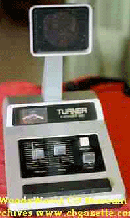 Turner kept up with the times with new designs, including the Turner Expander 500 with VU meter, tone and amplification controls, whereas Astatic's D104 remained cast in stone. And speaking of Astatic, we'll look at what they offered during this "Time of Change" in my next installment. But for more classic Turner try the CB Gazette's TURNER web page.
Turner kept up with the times with new designs, including the Turner Expander 500 with VU meter, tone and amplification controls, whereas Astatic's D104 remained cast in stone. And speaking of Astatic, we'll look at what they offered during this "Time of Change" in my next installment. But for more classic Turner try the CB Gazette's TURNER web page.
-
-
-
Wednesday, November 08, 2006
 self looks good, has a nice big display which is easy to read, has great transmit audio, but a terrible, terrible noise blanker (which at times, actually adds noise into the receiver). But the real deal is that it's an HF+6m mobile that is selling (new) for about $800. There are several other alternatives (some less expensive) which offer HF-440 coverage, yet this dinosaur continues to roam the catalog pages of HRO and AES.
self looks good, has a nice big display which is easy to read, has great transmit audio, but a terrible, terrible noise blanker (which at times, actually adds noise into the receiver). But the real deal is that it's an HF+6m mobile that is selling (new) for about $800. There are several other alternatives (some less expensive) which offer HF-440 coverage, yet this dinosaur continues to roam the catalog pages of HRO and AES. TS-430 (made around the same time) and fetches a price in the range of $500-600 dollars (close to original retail).
TS-430 (made around the same time) and fetches a price in the range of $500-600 dollars (close to original retail). TS-50, and HF mobile rig. A favorite of HAM's and Freebanders alike, this was a popular rig while in production (in fact it competed directly with Alinco's DX-70t) and remains popular on the used radio market at a high range of $400-$550 dollars. I have nothing to say about the rig itself, except that when you breach the $500 mark, you should be asking yourself "Should I pay this much for a used, 20-yearold HF mobile? Or should I kick in another $100-$200 and get a newer, smaller rig with a warranty and VHF-UHF coverage?"
TS-50, and HF mobile rig. A favorite of HAM's and Freebanders alike, this was a popular rig while in production (in fact it competed directly with Alinco's DX-70t) and remains popular on the used radio market at a high range of $400-$550 dollars. I have nothing to say about the rig itself, except that when you breach the $500 mark, you should be asking yourself "Should I pay this much for a used, 20-yearold HF mobile? Or should I kick in another $100-$200 and get a newer, smaller rig with a warranty and VHF-UHF coverage?"Friday, November 03, 2006
 egan to fill up quickly so crafty Sideband Operators, using VFO's or crystal kits moved to frequencies above channel 23, while AM'ers cut that designated wire to allow them to use channels 22a and 22b (there was nothing more satisfying than hearing the "Clip" noise from the wire cutters....unless of course, it was the wrong wire) I seem to recall on local fellow who got in there with a pair of snips the size of garden shears, and managed to short out everything around the green wire.
egan to fill up quickly so crafty Sideband Operators, using VFO's or crystal kits moved to frequencies above channel 23, while AM'ers cut that designated wire to allow them to use channels 22a and 22b (there was nothing more satisfying than hearing the "Clip" noise from the wire cutters....unless of course, it was the wrong wire) I seem to recall on local fellow who got in there with a pair of snips the size of garden shears, and managed to short out everything around the green wire.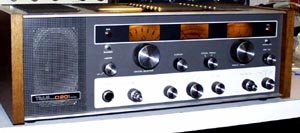 een to this as well and began to make rigs with wood side panels, brushed chrome, and other cosmetics with hopes the base units would make their way into the living rooms of America as well [Note - the wood features also reflected the current fad of wood paneled living rooms, and mobile units with brushed chro
een to this as well and began to make rigs with wood side panels, brushed chrome, and other cosmetics with hopes the base units would make their way into the living rooms of America as well [Note - the wood features also reflected the current fad of wood paneled living rooms, and mobile units with brushed chro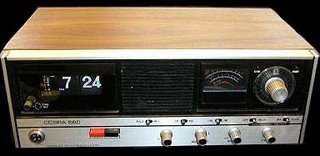 me and painted "Wood" accents reflected many vehicles of that era that had fake wood dashboards, or side panels on station wagons].Fanon even had a small base unit with looked like the latest solid-state FM radio tuners of that day. And most manufacturers were keen to the operators love of a BIG Base Station! When the "Joker" invited me down to his house I knew that it was either to show me he new BIGGER Base Station or his new BIGGER antenna. No one wanted to pay six bills or more to get a base that was the size of a small VCR.
me and painted "Wood" accents reflected many vehicles of that era that had fake wood dashboards, or side panels on station wagons].Fanon even had a small base unit with looked like the latest solid-state FM radio tuners of that day. And most manufacturers were keen to the operators love of a BIG Base Station! When the "Joker" invited me down to his house I knew that it was either to show me he new BIGGER Base Station or his new BIGGER antenna. No one wanted to pay six bills or more to get a base that was the size of a small VCR.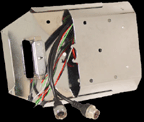 d offered the buyer a break in price. CB's, being under-the-dash mounted were easy (and fast) to steal, and brought the thief a fast profit on the black market, or local truck stop. CBer's bought devices that would allow the radio to slide into a bracket quickly, and slide out just as fast so they could lock their rig in the trunk. Others had hideaway antenna brackets so they could fold their antenna into the trunk, so their car would not appear to have a CB radio in it [ed.- my memory may be faulty on this one, but I seem to recall watching the local Houston news one night and they had a story about a local guy who invented and put a patent on this device]. If you were monitoring channel 19 while driving down the road it was not uncommon to hear someone offering a CB for half it's value. Once an interested party was snagged, the seller would suggest that they move to another channel to discuss the deal. Not all ON-THE-AIR deals were black market radios, but a good percentage of them were. Today, many thieves consider CB's not worth their time, due to lower prices and the general (yet wrong) impression that CB is dead.
d offered the buyer a break in price. CB's, being under-the-dash mounted were easy (and fast) to steal, and brought the thief a fast profit on the black market, or local truck stop. CBer's bought devices that would allow the radio to slide into a bracket quickly, and slide out just as fast so they could lock their rig in the trunk. Others had hideaway antenna brackets so they could fold their antenna into the trunk, so their car would not appear to have a CB radio in it [ed.- my memory may be faulty on this one, but I seem to recall watching the local Houston news one night and they had a story about a local guy who invented and put a patent on this device]. If you were monitoring channel 19 while driving down the road it was not uncommon to hear someone offering a CB for half it's value. Once an interested party was snagged, the seller would suggest that they move to another channel to discuss the deal. Not all ON-THE-AIR deals were black market radios, but a good percentage of them were. Today, many thieves consider CB's not worth their time, due to lower prices and the general (yet wrong) impression that CB is dead.- Citizens Band Radio was hotter than a "Pet Rock"
- Thousands of licenses were being processed each month
- While expensive, people found a way to come up with the $$$
- CB Radio Shops seemed to be on every other corner
- And all of these people were crammed into 23 channels
- There were many CB companies competing for your money: E.F. Johnson, PACE, Pearce-Simpson, RCA, Panasonic, Lafayette, Radio Shack, Kraco, Teaberry, Tram, Browning, Cobra, SBE, Courier, Fanon (then Courier/Fanon), Royce, Sears, J.C. Penny, Midland, Hy-Gain, Siltronix, Pal, G.E., Palomar, Utac, Regency, Robyn, Sonar, Gemtronics, Shakespeare, Xtal, and Kris just to name a few, but you get the idea....Citizens Band Radio had more operators than the Amateur Radio Service!!
-
TO BE CONTINUED AT A LATER DATE
-

